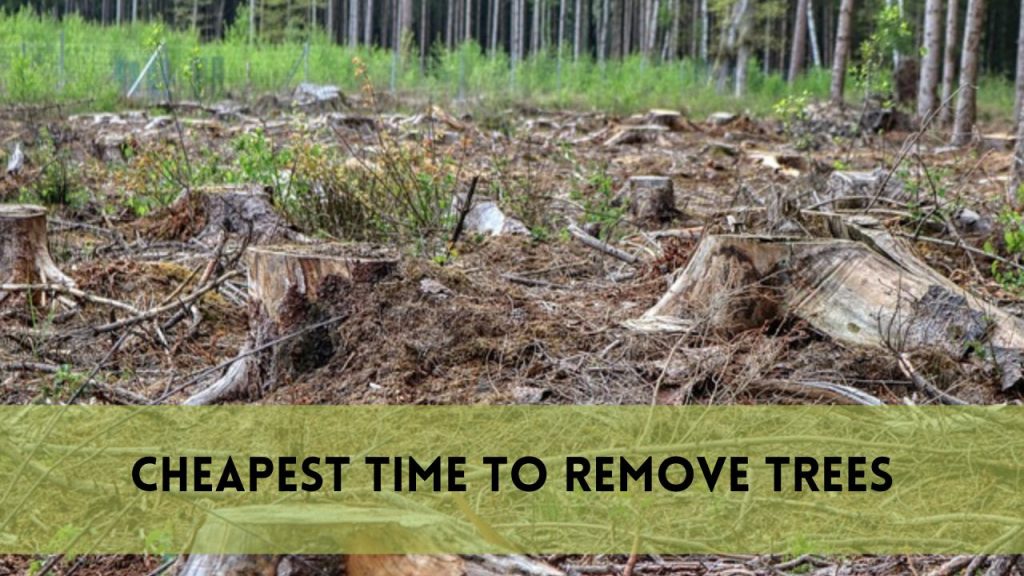Banana trees, with their rich foliage and tropical allure, may be an enticing addition to any garden or landscape. However, there are times when these gorgeous plants must be removed, whether to regulate their size, eradicate disease-infected specimens, or make space for new plantings. This book delves into the art to remove banana trees, unraveling the numerous stages and considerations involved in this operation.
We go on a journey that not only ensures the successful extraction of banana trees, but also shines light on the many options for their disposal or relocation. Whether you’re a seasoned gardener wishing to refresh your garden or a rookie hoping to face this work, this thorough guide will arm you with the knowledge and equipment you need to manage the removal of banana trees effectively and confidently.
Reason for Removal of Banana Trees
Space Management: Banana trees can grow fairly large and may need to be removed to make room in your garden for other plants or features. Examine the available space and determine whether the banana tree’s size is encroaching on other plants or structures.
Disease Control: If a banana tree is infected with a disease that can spread to other plants, eradication is typically the best option to keep the sickness from spreading further. Determine the exact disease afflicting the tree and establish that it cannot be saved through other measures, such as trimming or therapy.
Maintenance: Some gardeners prefer to remove older banana trees to make space for younger, more productive ones, or to manage the general aesthetics of the garden. Consider the age and production of the banana tree in question, as well as if its removal is in line with the long-term goals of your garden.
Time to Remove Banana Trees
Timing your banana tree removal is essential. Late winter or early spring is generally the best time, as the tree is less active. This minimizes stress on the plant and allows for a smoother removal process.
However, you should also consider local climate conditions and frost risks when determining the timing of removal.
Tools and Equipment
Gathering all of the appropriate tools and equipment for the job is critical to ensuring a seamless removal process. Among them are:
Saw:You’ll need a strong saw to cut down the banana tree’s trunk. A chainsaw may be essential for larger banana trees. To produce clean cuts efficiently, ensure that your saw is sharp and well-maintained.
Pruning Shears: These are useful for removing leaves, smaller branches, and fruit clusters. Choose sharp pruning shears that can readily cut through the banana tree foliage.
Shovel A strong shovel will be required for digging out the roots. Depending on the soil type in your garden, select a shovel with a pointed or flat spade.
Safety Equipment Safety should always be a priority. Wear suitable safety equipment, such as heavy-duty gloves to protect your hands from splinters and safety goggles to shield your eyes from debris. Consider donning a hard hat for added head safety, especially when working with larger banana trees.
Safety Measures
You’ve told others about the removal procedure to safeguard their safety, especially if you’re working in a common garden place. Place conspicuous caution signs to alert others to the current activity.
- You’re wearing the proper safety equipment, such as gloves to protect your hands and safety goggles to protect your eyes from debris. Check that your safety equipment is in good shape and fits properly.
- All tools and equipment are in fine functioning order. Inspect your saw, pruning shears, and shovel to ensure they work properly and do not pose any safety issues while in use.
- You have a first-aid kit on hand in case of small injuries. Ensure that the pack has basic items such as bandages, antiseptic wipes, and adhesive tape.
Steps to Remove Banana Trees
Begin by assessing the banana tree you plan to remove. This assessment will help you determine the best approach for removal. Consider the following factors:
- Assess the size and overall health of the banana tree. A larger tree may necessitate more work and specialized equipment for removal.
- Inspect the tree’s trunk and foliage for signs of illness, infestation, or rot.
- Determine the direction in which you want the banana tree to fall. Aim to divert the fall away from any structures, other plants, or areas where people could be present.
- Investigate the depth and spread of the banana tree’s root system. Understanding the root structure is critical for the root removal phase later in the process.
- Begin by removing the leaves from the tree’s crown. Begin at the bottom and work your way up.
- Using pruning shears, carefully cut off individual leaves or clusters.
- Cut the banana tree wood at an angle with your saw. The angle should be angled in the desired falling direction. Make sure the cut is clean and complete, and that it is slightly higher than the ground to prevent the saw from binding when the tree falls.
- Keep control of the saw and the fall’s direction. Ascertain that it falls securely and without causing harm to nearby plants, structures, or objects.
- In rare circumstances, especially with larger banana trees, you may need to make extra cuts to guarantee a controlled fall.
- Dig around the stump to uncover the roots with a strong shovel. Be prepared for some roots to be deep in the ground, and dig a trench around the stump to gain better access to the root system.
- Once the roots have been exposed, use a saw or pruning shears to cut them. Be thorough, as even minor root remnants can cause regrowth. Cut the larger roots into manageable portions to make removal easier.
- After cutting the roots, you can dig out the leftover stump. Ensure that no part of the stump or root system remains in the ground. Using the shovel, loosen the earth around the stump and then lift it out of the hole.
- Fill the hole left by the removed stump with dirt, tamping it down to prevent it from settling. Level the earth to fit the surrounding scenery.
- Some areas have recycling centers that accept tree materials for chipping and recycling.
FAQS
Why should I remove a banana tree from my garden?
There are various reasons to consider removal, including space management, disease control, and upkeep. Examine the demands of your garden to see if removal is required.
When is the ideal time to remove a banana tree?
Late winter or early spring is often the optimum time because the tree is less active, lessening stress during removal. Consider the local climate.
What tools do I need to remove a banana tree?
A saw, pruning shears, a spade, safety gear (gloves and safety goggles), and, for larger trees, a chainsaw are all necessary instruments.
How can I assure that the banana tree does not regenerate following its removal?
Remove the roots completely and keep an eye on the region for regrowth. Remove any new shoots or roots as soon as they appear.
What should I deal with the banana tree pieces that have been removed?
You can compost the leaves and smaller branches, mulch the larger branches and trunk, or check with local recycling centres for disposal choices. Recycling the materials is good for the environment.
Conclusion
The removal of a banana tree may seem like a daunting task, but with the right knowledge and tools, it can be accomplished safely and effectively. Whether you’re reclaiming space, addressing disease concerns, or making room for new growth, this comprehensive guide equips you with the steps needed to successfully remove banana trees from your garden. Embrace the transformation, and watch your garden flourish anew.




